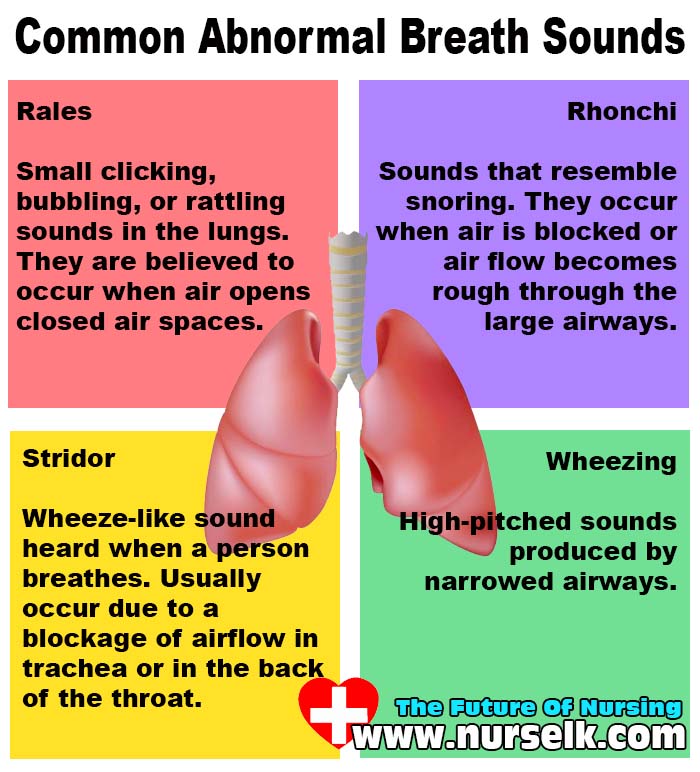
Treasure Island (FL): StatPearls Publishing 2022 Jan. Respiratory sound classification for crackles, wheezes, and rhonchi in the clinical field using deep learning. However, the mechanical breath often enhances breath sounds.
#Adventitious breath sounds in infant free#
Links to the free training courses are noted as well. On this page we provide a definition, and then examples of several types of adventitious breath sounds using audio recordings and text.

Age-related pulmonary crackles (rales) in asymptomatic cardiovascular patients. It may be very difficult to hear breath sounds when the infant is breathing spontaneously. Introduction This website offers free and paid lessons, auscultation guides and quizzes for adventitious breath sounds. Centers for Disease Control and Prevention. Retrieved from Ĭenters for Disease Control and Prevention. Centers for Disease Control and Prevention. Automatic detection or classification of adventitious sounds is useful to assist physicians in diagnosing or monitoring diseases such as asthma, Chronic Obstructive Pulmonary Disease (COPD), and pneumonia. Available from: Ĭenters for Disease Control and Prevention. Test your knowledge on abnormal respiratory sounds.Īdderley N, Sharma S. It can occur with cases of congestive heart failure, atelectasis, pulmonary fibrosis, and pneumonia. This sound is usually occurring because when the patient inhales air into the small airways (like the bronchioles and alveoli, which are deflated or collapsed) it leads these structures to all of a sudden “crackle” or “explode” open, which creates this high-pitched crackling noise that is brief. Location: large airways like trachea and bronchusĭefining characteristics: snoring or snorting sounds that will decrease or go away with coughing or suctioning Listen to an Example of Rhonchi Timing: Occurs mainly on expiration but could be heard along with inspiration
#Adventitious breath sounds in infant series#
Discontinuous or continuous? meaning are you able to distinguish the individual sounds that come in a series and are intermittent (discontinuous)? Or are they a continuous sound?.the increased susceptibility of a child to the development of respiratory problems, including. Timing: are you hearing it mainly on inspiration or expiration or even both? nasal flaring, and adventitious breath sounds for IAC.

When you’re auscultating lungs sounds you want to tune your ears to take notice of the following things that will help you determine what type of abnormal sound you are hearing:

What questions should you be asking yourself while auscultating adventitious lung sounds? In this review you will learn about: wheezes, coarse crackles, fine crackles, stridor, pleural friction rub, rhonchi.


 0 kommentar(er)
0 kommentar(er)
